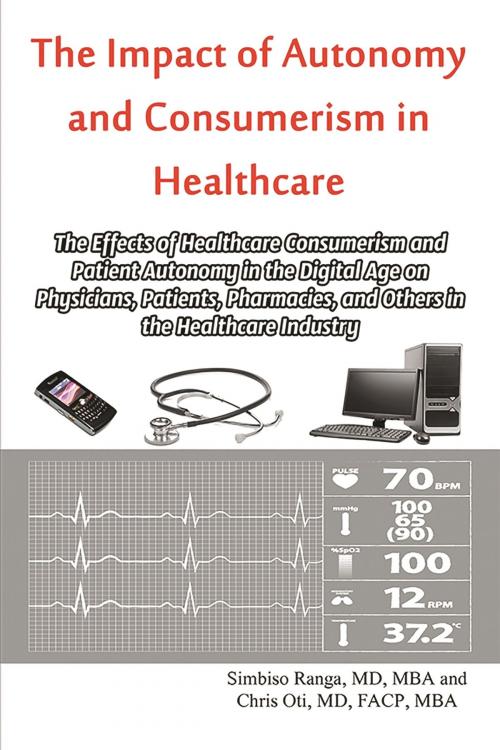The Impact of Autonomy and Consumerism in Healthcare
The Effects of Healthcare Consumerism and Patient Autonomy in the Digital Age on Physicians, Patients, Pharmacies, and Others in the Healthcare Industry
Nonfiction, Health & Well Being, Medical, Patient Care, Health Care Delivery, Health, Health Care Issues| Author: | Simbiso Ranga, MD, MBA and Chris Oti, MD, FACP, MBA | ISBN: | 9781681816524 |
| Publisher: | Strategic Book Publishing & Rights Co. | Publication: | March 19, 2016 |
| Imprint: | Strategic Book Publishing & Rights Co. | Language: | English |
| Author: | Simbiso Ranga, MD, MBA and Chris Oti, MD, FACP, MBA |
| ISBN: | 9781681816524 |
| Publisher: | Strategic Book Publishing & Rights Co. |
| Publication: | March 19, 2016 |
| Imprint: | Strategic Book Publishing & Rights Co. |
| Language: | English |
From the origins of consumerism to the evolution or revolution associated with consumerism in healthcare, this book is a reflective depiction of the past, present, and future of healthcare as it empowers the consumer (patient).The Impact of Autonomy and Consumerism in Healthcare navigates the changing healthcare landscape, navigating some of these changes and what they mean, not only for healthcare delivery, but for providers, suppliers, and consumers.It comments on new healthcare developments, including the mushrooming urgent care centers and walk-in clinics, as well as such technological developments as patient portals in electronic medical records. The book reflects on the challenges of opening up the healthcare infrastructure to the consumer, while raising issues about cyber security, privacy, and litigation.The authors attempt to predict the future, just as many physicians reluctantly do for their patients, in a chapter aptly titled “Prognosis.”The book would not be complete without anecdotes and war stories from the authors’ experiences in the field, presenting surprises and contradictions in their practice of medicine across the USA as immigrant physicians. Hopefully these powerful stories will help untangle the healthcare juggernaut and move toward a more empowered consumer.
From the origins of consumerism to the evolution or revolution associated with consumerism in healthcare, this book is a reflective depiction of the past, present, and future of healthcare as it empowers the consumer (patient).The Impact of Autonomy and Consumerism in Healthcare navigates the changing healthcare landscape, navigating some of these changes and what they mean, not only for healthcare delivery, but for providers, suppliers, and consumers.It comments on new healthcare developments, including the mushrooming urgent care centers and walk-in clinics, as well as such technological developments as patient portals in electronic medical records. The book reflects on the challenges of opening up the healthcare infrastructure to the consumer, while raising issues about cyber security, privacy, and litigation.The authors attempt to predict the future, just as many physicians reluctantly do for their patients, in a chapter aptly titled “Prognosis.”The book would not be complete without anecdotes and war stories from the authors’ experiences in the field, presenting surprises and contradictions in their practice of medicine across the USA as immigrant physicians. Hopefully these powerful stories will help untangle the healthcare juggernaut and move toward a more empowered consumer.















